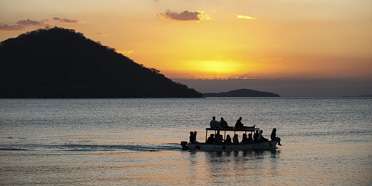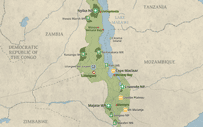Malawi’s main attraction is the immense lake that shares it name. Boasting a spectacular Rift Valley setting, Lake Malawi offers some beautiful beaches and a variety of water-based activities. Big Five safari destinations include Liwonde National Park, where you’ll see lots of hippos and elephants on boat trips along the atmospheric Shire River, and the more southerly Majete Wildlife Reserve. The rolling green highlands of Nyika National Park are ideal for walking.

Pros & Cons
Wildlife
Since the early 2000s, Malawi has made major strides in protecting its wildlife with the assistance of various international NGOs. Poaching is not the problem it was, and several ambitious translocation programs have been undertaken. Elephant, buffalo and hippo are common on the waterways, while lion, cheetah, African wild dog and black rhino inhabit Liwonde National Park and Majete Wildlife Reserve. Antelope are plentiful and include more unusual species such as sable, roan and nyala.
Activities
For many visitors, Malawi’s main attraction is the beautiful lakeshore beaches and activities such as canoeing, snorkeling and diving. Game drives can be undertaken in the parks and reserves, most of which also offer walking safaris or other guided walks. A wildlife highlight is a boat trip on the wildlife-rich Shire River as it flows through Liwonde National Park. Popular hiking and walking destinations include Nyika National Park, Zomba Plateau and Mt Mulanje. Some fascinating rock art is protected in the Chongoni Unesco World Heritage Site.
Weather & Climate
Malawi has a tropical climate with high temperatures and ample rain. Travel is easiest in the Dry season (May to October). Afternoon rain is common in the Wet season (November to April) and humidity tends to be high. Temperatures are quite uniform throughout the year, but the Wet season months are a few degrees warmer than the Dry season months.
Best Time To Visit
The best time to visit Malawi for wildlife viewing is from July to October, during the middle and end of the Dry season, when animals tend to gather around the few remaining water sources. Bear in mind, though, that October can get unbearably hot. The months from May to August are very pleasant as rain is scarce and temperatures are mild. For those who don’t mind a bit of rain, the low-season months from mid-November to May are fresh and green, and low-season rates apply.












